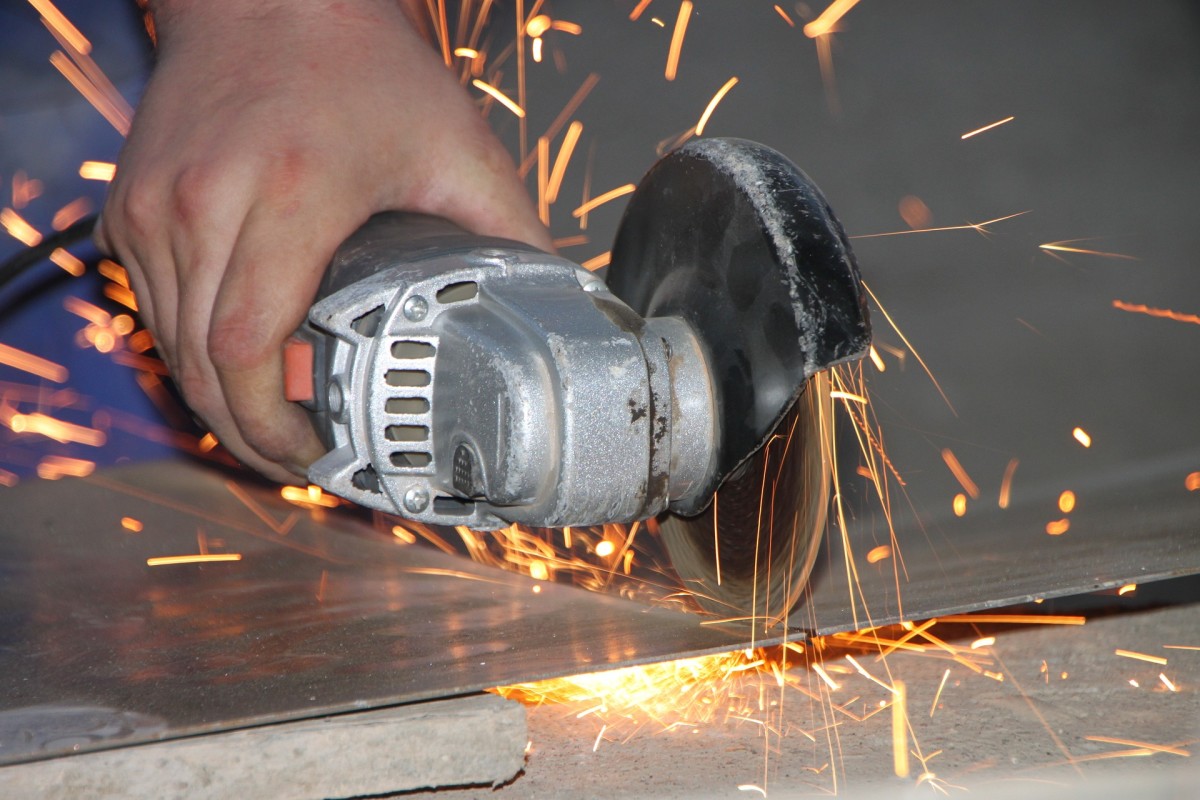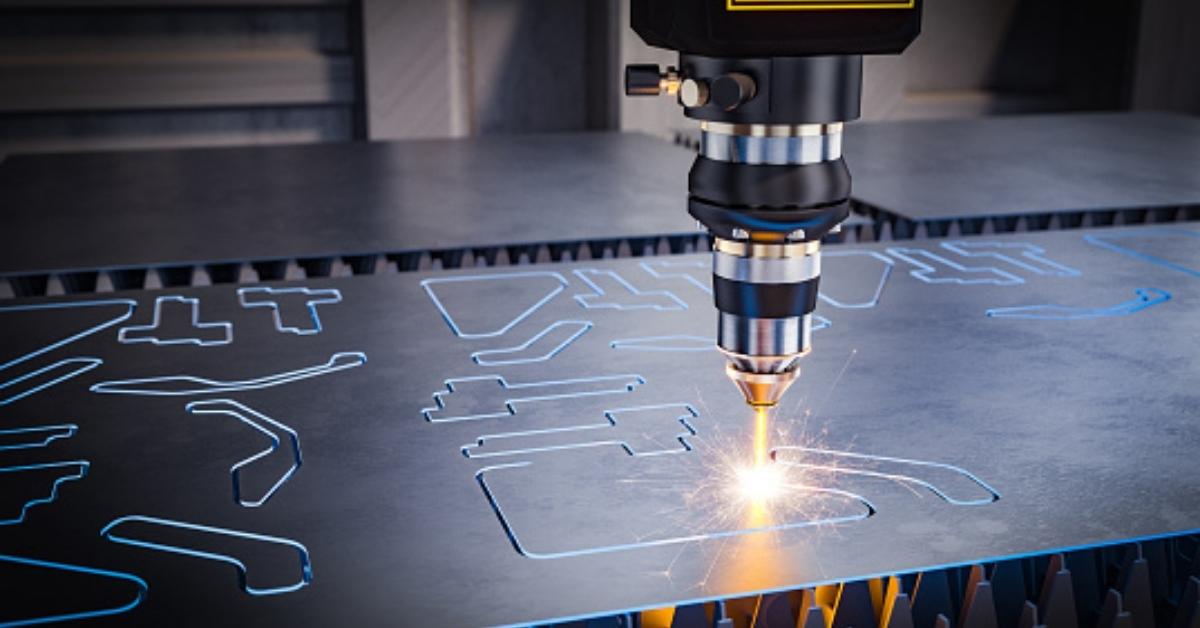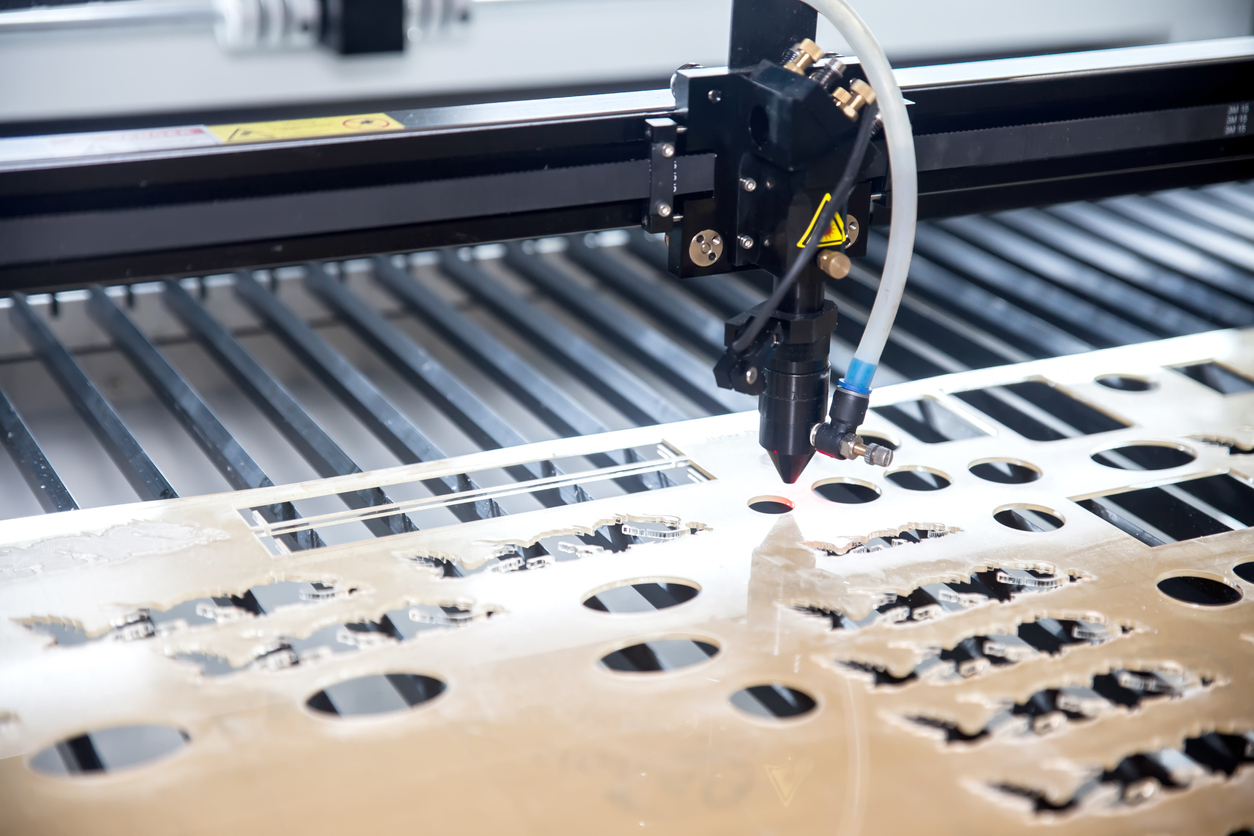Sheet metal cutting is the process of using various tools and machines to cut, shape, or bend sheet metal into different shapes and sizes. Sheet metal is a thin and flat metal that can be used for various purposes, such as roofing, ductwork, car body parts, furniture, and art. There are many ways to cut sheet metal, depending on the thickness, type, and design of the metal. Here are some of the common methods of sheet metal cutting:
➤ Electric saw: This is a tool that uses a rotating blade with sharp teeth to cut through metal. Electric saws are good for cutting straight lines and simple shapes, but they can be noisy, messy, and dangerous. To use an electric saw, you need to wax the blade, tape the metal, clamp it to a work station, and push the saw along the line you want to cut. You can learn more about how to cut sheet metal with an electric saw from this article.

➤ Tin snips: These are scissors-like tools that can cut through thin sheets of metal. Tin snips are good for cutting curved lines and detailed shapes, but they can be tiring, slow, and inaccurate. To use tin snips, you need to mark the metal, hold it firmly, and cut along the line with the snips. You can learn more about how to cut sheet metal with tin snips from this article.
➤ Dremel: This is a handheld rotary tool that can cut, grind, sand, polish, and drill metal. Dremel can cut intricate shapes and patterns, but it can be expensive, difficult, and time-consuming. To use a dremel, you need to attach the right cutting bit, adjust the speed, and guide the tool along the metal. You can learn more about how to cut sheet metal with a dremel from this article.
➤ Metal nibbler: This is a tool that cuts metal by punching out small pieces of metal along the cutting line. Metal nibblers can cut any shape and angle, but they can leave rough edges and waste metal. To use a metal nibbler, you need to drill a hole in the metal, insert the nibbler, and move it along the cutting line. You can learn more about how to cut sheet metal with a metal nibbler from this article.
➤ Laser cutting: This is a process that uses a high-powered laser beam to cut through metal. Laser cutting can produce precise and complex shapes, but it can be costly, hazardous, and require special equipment. To use laser cutting, you need to design the shape on a computer, send it to a laser cutter, and wait for the machine to cut the metal. You can learn more about laser cutting and sheet metal services from this website.

If you want to optimize your sheet metal cutting and reduce waste, you can use a cut list optimizer. This is a software that helps you find the best way to cut sheet metal from a larger sheet. You can input the sheet size, the cutting kerf, and the required panel sizes and quantities, and the software will generate a plan for you. You can try a free cut list optimizer from this website.
How do I choose the right cutting tool for my project?
Choosing the right cutting tool for your project depends on several factors, such as:
➤ The thickness of the sheet metal: Thicker metal requires more powerful and durable tools, such as electric saws, metal nibblers, or laser cutting. Thinner metal can be cut with less force and precision, such as tin snips, dremel, or laser cutting.
➤ The type of the sheet metal: Different metals have different properties, such as hardness, ductility, and conductivity. Some metals are easier to cut than others, and some may require special tools or techniques. For example, stainless steel is harder and more resistant to corrosion than mild steel, but it also generates more heat and sparks when cut. Aluminum is softer and lighter than steel, but it also tends to stick to the cutting blade and cause burrs. Copper is highly conductive and malleable, but it also oxidizes quickly and needs to be cleaned before cutting. You can learn more about the different types of sheet metal and how to cut them from this article.

➤ The design of the sheet metal: The shape and size of the sheet metal affect the choice of the cutting tool. If you want to cut straight lines and simple shapes, you can use tools that are easy to control and maneuver, such as electric saws, tin snips, or metal nibblers. If you want to cut curved lines and complex shapes, you can use tools that are more flexible and versatile, such as dremel, metal nibbler, or laser cutting. If you want to cut intricate patterns and details, you can use tools that are more precise and accurate, such as dremel or laser cutting.
To summarize, the right cutting tool for your project depends on the thickness, type, and design of the sheet metal. You can compare the advantages and disadvantages of each tool from the table below:
Tool |
Pros |
Cons |
|---|---|---|
Electric saw |
Fast, powerful, easy to use |
Noisy, messy, dangerous, limited to straight lines and simple shapes |
Tin snips |
Cheap, simple, portable |
Tiring, slow, inaccurate, limited to thin metal and curved lines |
Dremel |
Flexible, versatile, precise |
Expensive, difficult, time-consuming, limited to small areas and thin metal |
Metal nibbler |
Smooth, clean, accurate, can cut any shape and angle |
Rough edges, waste metal, need to drill a hole first, limited to thin metal |
Laser cutting |
Precise, complex, high-quality |
Costly, hazardous, require special equipment, limited to flat metal |
TECVINA – SUPPORTING INDUSTRIES
A powerful laser beam is used in laser cutting to cut through any material. Light Amplification by Stimulated Emission of Radiation, or laser. One of the most well-liked industrial cutting methods is this one. We are using a CNC laser cutting machine with 6kW of power to cut carbon steel up to 25mm thickness and 16mm with stainless steel.